#kolkata rainbow pride walk
Text
went to my first pride walk with my partner today. such a beautiful day.
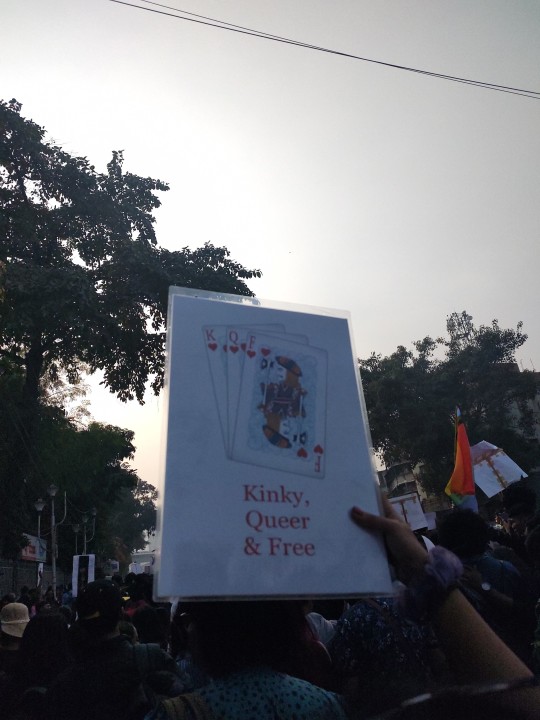
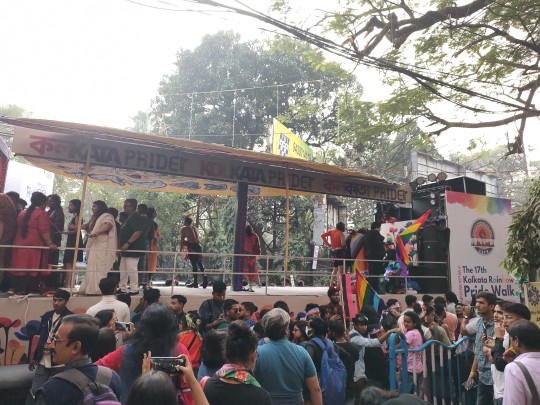



13 notes
·
View notes
Note
Saw a post about the historic kolkata rainbow pride walk on your blog tagged as bangladesh????
oop fr? sorry abt that. if we find it, we'll fix it.
5 notes
·
View notes
Text
0 notes
Text
Pride month and the history behind it.
From bold outfits to bolder demonstrations, Pride is not just a celebration, it’s more than a party it’s more than about being out and proud. It has its roots in resistance.
Pride is the encouragement of self-declaration, equality, and dignity of Lesbian, Bisexual, Gay, and Transgender (LGBTQ) people as a social group. Pride parade organized in various parts of the world, in the month of June which is referred to as Pride Month. These are not just parades including LGBTQIA+ communities coming together and celebrating their freedom to be their true selves
but it is a movement in itself. It is the history of minority groups who’ve struggled for decades overcoming prejudice and being accepted as who they are. It’s a parade. It’s a spectacle.
When It all started?
The Pride Parade originally started on June 28th, 1970, when police officers from New York city raided the Stonewall Inn, a gay bar in New York city’s Greenwich Village, the customers were hauled outside the bar. In return, the customers and bystanders resisted and threw bottles and coins at the officers. Following this, New York’s gay community, after years of harassment by authorities, broke out riots that went on for three days. Soon after the riots, organizations such as the Gay Liberation Front and Gay Activists Alliance were formed.
After a year of the Stonewall riots, the nation’s first Gay Pride March was held on 28th June 1970. Although, the LGBTQIA+ movements have been taking place since the 1920s the rage held by the Stonewall riots helped the LGBTQIA+ movement to reach a new level. In 2016, the area around the Stonewall Inn was entitled as a national monument.
The mother of Pride
Brenda Howard, a bisexual woman, known as ‘The Mother Of Pride’ for her work in coordinating the first LGBTQIA+ pride march in 1970. She also gave birth to the idea for a week-long chain of events around the Pride march.
Pride in India
In India, the first Pride parade was held in Kolkata on 2nd July 1999, called ‘The Kolkata Rainbow Pride Walk‘, it is also the oldest Pride march in South Asia. Due to homophobia, India has abounded LGBTQIA+ community. Although the country’s youth is very much inclined towards the spread of awareness about such sensitive topics there is still room for improvement due to the stigma that continues to exist in society.
Who All Can Join The Pride Parade
No matter who you are or who you love or where do you come from, Pride is welcomed to everyone. It is about loving and being loved which I’m quite sure, we are all capable of. So, wear your crown of acceptance and join the pride parade with the rainbow cape behind your back and glitters all around you!
Let’s celebrate Pride with all the love within ourselves and create a world full of rainbows!
1 note
·
View note
Photo

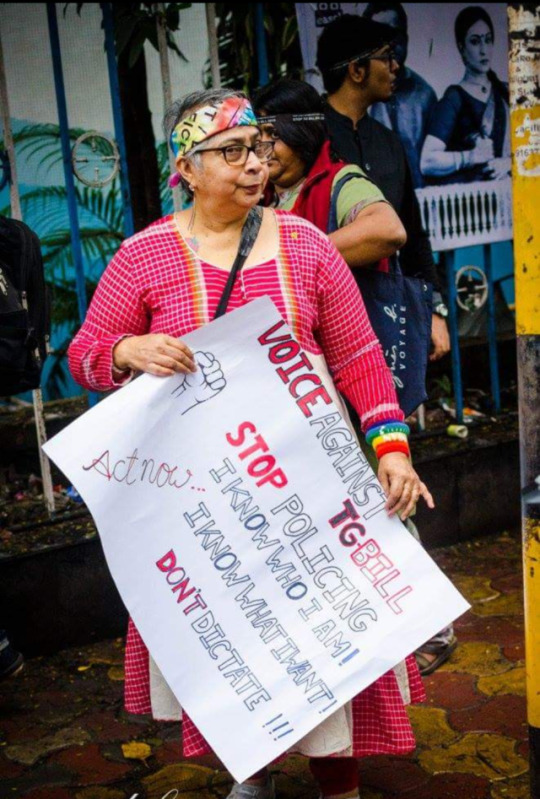
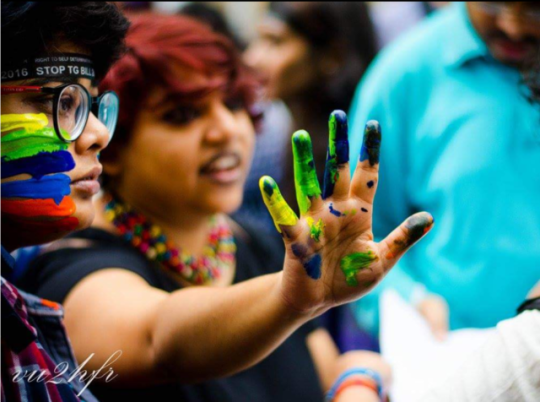
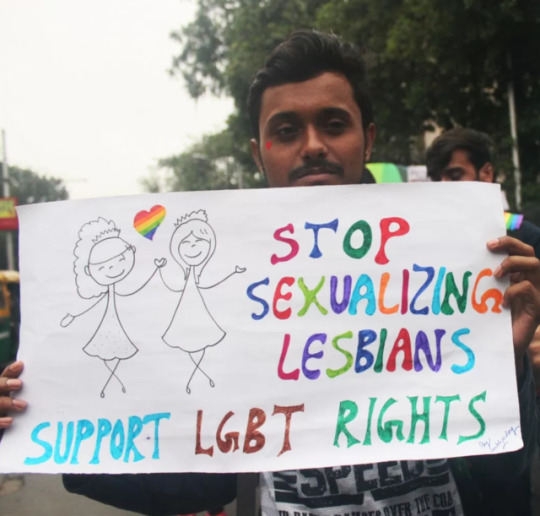
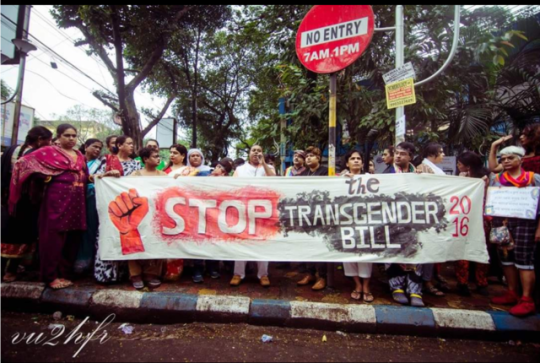
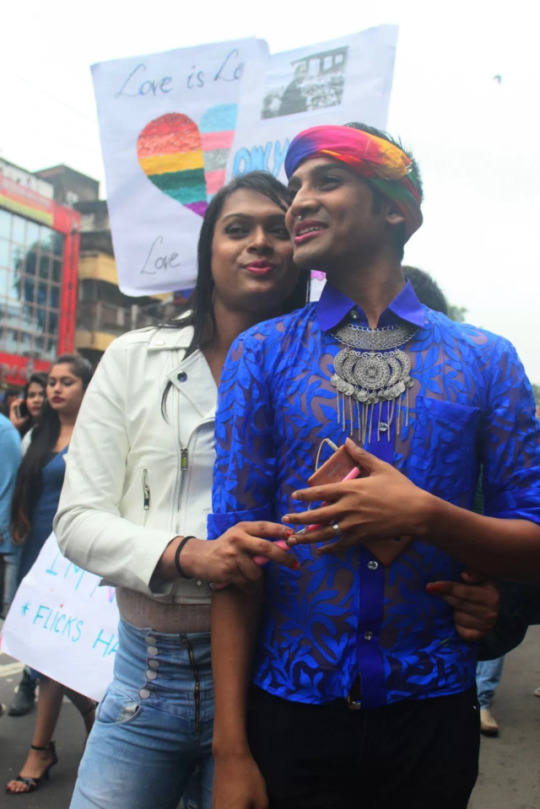
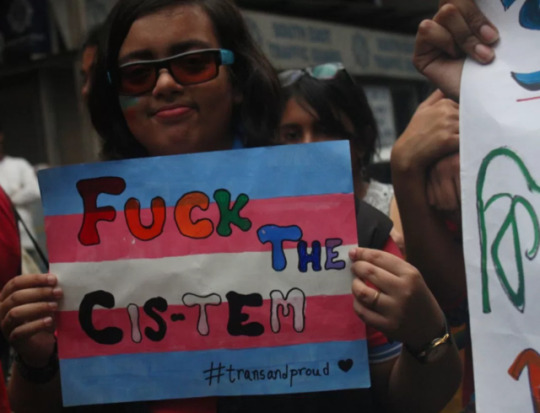
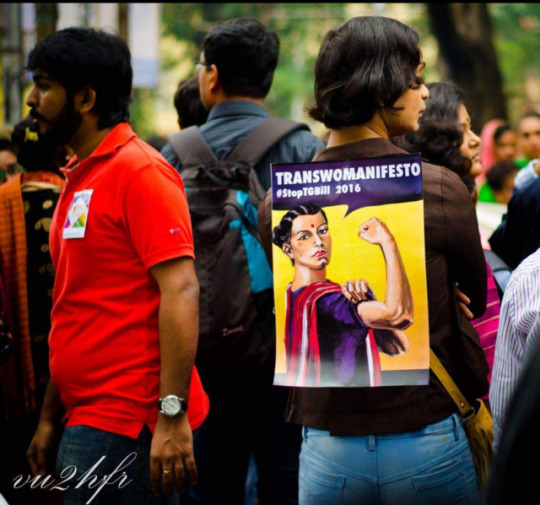
Kolkata Rainbow Pride Walk 2017 🏳️🌈
#kolkata pride#pride#lgbtq#lgbt rights#lgbtqa#lgbtqa+#q word tw#queer#lesbian#gay#trans#bisexual#asexual#pansexual#india#indian#desi#5k#10k
12K notes
·
View notes
Link
Kolkata Rainbow Pride Walk in north-east India held its 16th parade on Saturday. As many Pride parades in India it was awash with colourful costumes, allies and protest signs, calling for; the end of Section 377 of the Penal Code which criminalizes homosexuality and improved rights for the trans community.
But before the main event kicked off a group of protestors marked what the called, ‘Transgender Day of Rage’. They were protesting the Federal Government’s controversial transgender Bill which was introduced last year.
The Transgender Persons (Protection of Rights) Bill, 2016, supposedly is designed to improve the rights of trans people in India. But many of its critics argue that it will undermine the lives and livelihoods of trans people in India.
CLICK THE HEADER LINK TO READ THE FULL ARTICLE.
#india#trans#transgender#gender non-conforming#lgbtq#trans visibility#trans history#trans issues#transmisogyny#transphobia#cissexism#discrimination#protest#pride parade#activism#human rights#bigotry#oppression#government#politics#lgbtq issues#transgender day of rage
12 notes
·
View notes
Text
Kolkata LGBTQ Activists Take Out March Till RSS Headquaters Against CAA-NRC
Kolkata LGBTQ Activists Take Out March Till RSS Headquaters Against CAA-NRC
[ad_1]
The LGBTQ community members started marching from Shahid Minar in the city hub, saying they wanted to go to the Rashtriya Swayamsevak Sangh (RSS) office located in north Kolkata’s Beadon Street. IANS
Updated:January 4, 2020, 10:22 AM IST

People hold a placard against a new citizenship law as they participate during Rainbow Pride Walk, an event promoting gay, lesbian, bisexual and…
View On WordPress
0 notes
Photo

16th #Kolkata #Rainbow #Pride #Walk 2017! #instaclick #instapride #PanPride #Equality #Sunday #India #WestBengal #Bengal #Bengali #PrideMarch #LGBTQA #BornThisWay (at Desapriya Park)
#walk#india#pridemarch#lgbtqa#sunday#equality#instapride#bengali#rainbow#pride#panpride#bornthisway#instaclick#westbengal#bengal#kolkata
0 notes
Photo
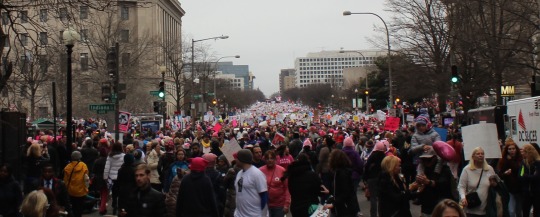
Washington DC is also a city on river. The town I grew up in, Princeton, is a colonial town that’s a stopping point between New York and Philadelphia. I imagine that if you had to go from New York to DC in a horse drawn carriage, you would take a day to get to Princeton, and then a day to get to Philadelphia, and then DC the following morning. A 2-3 day journey.
Henrietta Hudson, the dyke bar I work for, took two bus-loads of lesbians from New York to DC for the Women’s March. It was a 5 hour journey each way, and every seat on two long buses was taken, by women willing to travel 10 hours in one day to add their bodies to the mass of hundreds of thousands and to return home safe and in good company.
The first time I visited DC, was in my early 20’s. My girlfriend and I were doing a weekend adventure in the nations capital, during cherry blossom season. We stayed at a youth hostel, in bunks, and took a day to see the Smithsonian, the Art museums, and senators jogging in tiny shorts in the main plaza of the city.
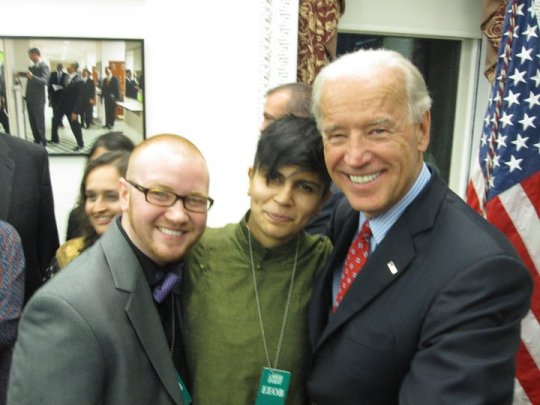
The second time visiting DC, at age 29, I’d been summoned by the White House to DJ their annual Diwali party. I took a train with my uncle, little brother, production collaborator, and my partner at the time. The ceremony opened with Vice President Joe Biden participating in a purification ceremony with a group of priests, surrounded by the Sikh, Hindu, and Jain community cultural contributors and political representatives. I was there to DJ the afterparty for a room full of important people who love classic Bollywood, one of my favorite specialties.
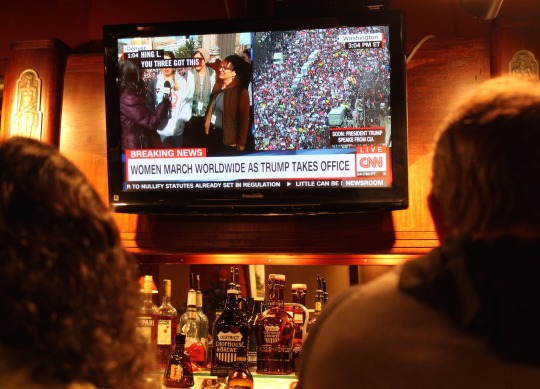
The third time, at 35, I’d arrived in the capital to move in resistance to the inauguration of Donald Trump to the highest office in America. 2016’s presidential election traumatized the nation as we watched every single marginalized community in this country get slandered, offended, threatened, and trod on by this ugly man’s ugly campaign. The whole ordeal left the majority of this country feeling sick to their core, and helpless, and in DC I was surrounded by them, none of us alone in our rage.
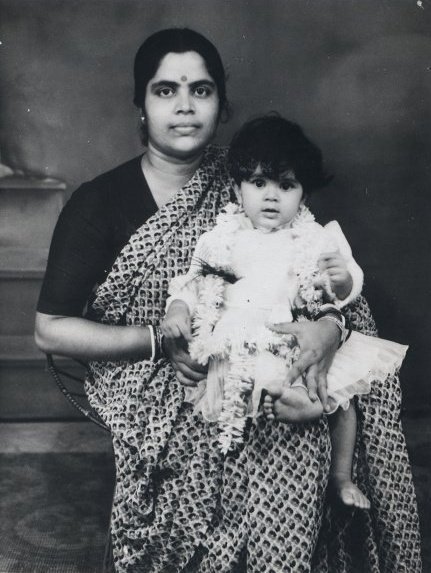
I was born in Kolkata, India. My family moved here in 1984. My dad left first when I was 2, then at age 3 my mother and I got on a plane from tropical heat and landed in 3 feet of snow at JFK international airport in Queens. I ran away 3 times on the flight, kicking and screaming about missing my grandmother, who had been raising me while my mom was working, and in grad school.
When we landed, the first thing that happened to her was that the woolen winter coat she had brought along got stolen from her in the airport. This woman from a foreign land, with a feral child, and a strange and violent new reality ahead of her, she must have been terrified of this country from the very beginning.
It made perfect sense for her to choose to work a government job in finance, to be on the stable side of power in America. She re-educated herself here to do that work, but in India she had been a high school english teacher, and as a result my handwriting looks like I went to a Catholic School in Kolkata.
Books were considered to be sacred and holy objects in the Hindu Brahmin house i was raised in. My father became an expert in shelf building in the course of my growing up - they had an ever expanding collection. He obsessively picked them up from garage sales, which were an American miracle to him.
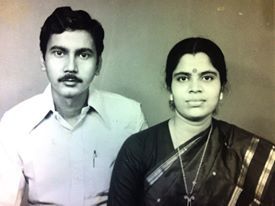
He also re-educated himself on arrival. In India he had been an entrepreneur, having tried to run a coal factory, a chicken farm, and also training to be a pilot. He had gotten into many motorcycle accidents before my birth. The last and final was when he and my pregnant mother were riding through Kolkata and the bike tipped and fell. Everyone was ok, but his motorcycling days were over after that, and after moving to the states he would re-educate himself to be an electrical engineer.
Their insistence on me having a great education, and our family having more potential is what motivated them to make great sacrifices to transition to America. So when I came out to them as a teenager it forced a direct confrontation between where we were all coming from and where we were all heading.
Being gay was not a valid identity in the culture they arrived from. When my mother really absorbed my identity, after walking in on my first kiss with a gay woman, Reagan era propaganda made her fear I would get AIDS and life a short and lonely life. We struggled for months to repair the rift, but I couldn’t compartmentalize my life enough to shield myself from her disappointment, and then I went off to college.
My 2nd year into college, after having grown up an only child, my Mom informed me that she was pregnant, at 47, and after not having spoken to me through my early college years. She wanted my opinion about whether she should keep the child. I asked her about the risks, there were many, and let her know I supported her decision either way. I also reminded her that when I was 5 I lied for a year to my friends about having a little brother, because I really wanted one as a kid. She decided to go forward with it. The distance between us temporarily shrank in the course of her pregnancy, and my brother was born a month after September 11th, 2001. George Bush was president. My whole family was terrified. That was the last year we saw a lot of each other.
When the Obama Administration took the stage, everything changed. After the political climate that followed 9-11, having a black president with a foreign sounding name was a welcome relief, even just on a symbolic level I know we all felt safer. When they asked me to DJ there, I invited my little brother to “perform” with me, and my Mom had to swallow her pride and agree to it. It was an extraordinary compromise, for extraordinary circumstances.
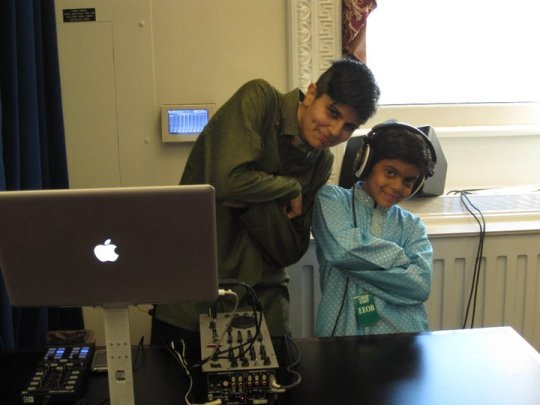
My little brother is a teenager now, he’s always been sensitive, articulate and thoughtful. His instagram feed showed me a photo he took of his friends protesting Trump during their school recess. He wrote a tender message to them there, expressing gratitude for their standing up and speaking out about things that matter to him, personally.
When the gay nightclub in Orlando had a mass shooting, he posted a photograph of his hand with all the hashtags #Pulse #Pride #Orlando scrawled across of the back of his hand in black ink.
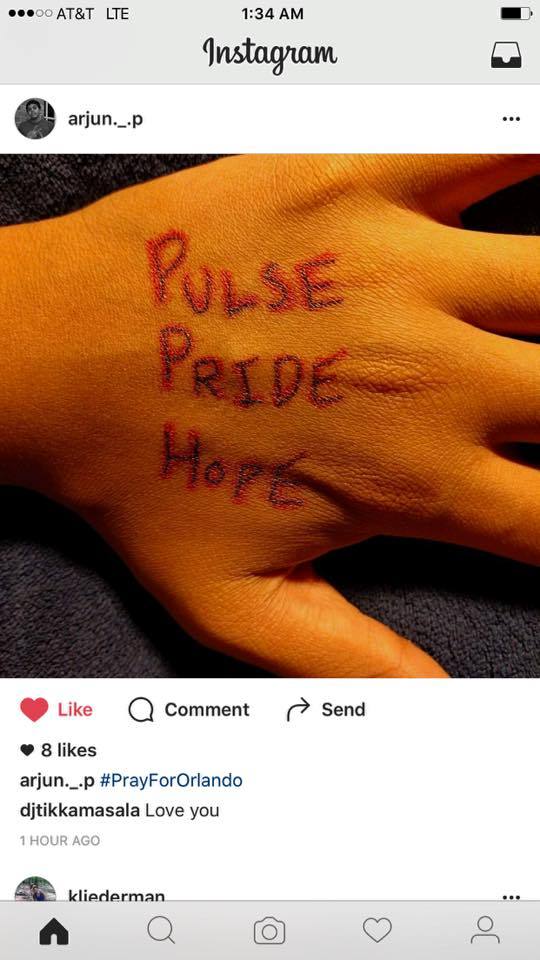
When marriage equality happened, he changed his facebook profile to the rainbow overlay, in support of the movement.
Our immigrant family story is strange and beautiful and also painful sometimes. For real though. This country is built of immigrant stories and the resilience that it requires to sacrifice and rebuild in the face of constant change.
The changes that are coming are going to test all of us, but many of us are used to being tested this way as a matter of survival. Adaptation is the norm in American culture, and that is a fact. I plan to stand up for the freedoms that my family made sacrifices for, and it’s overwhelming and inspirational to see how many are also standing up at this moment in time and choosing resilience over fear.
vimeo
vimeo
3 notes
·
View notes
Photo
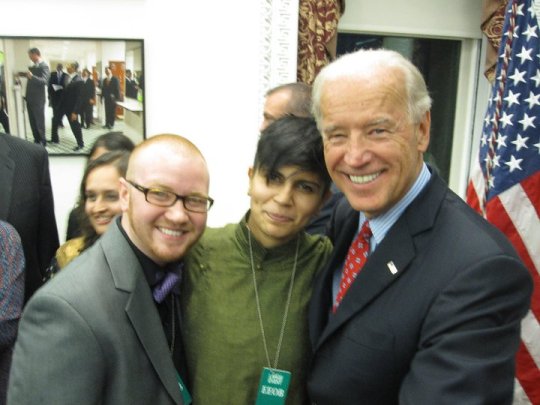
Washington DC is also a city on river. The town I grew up in, Princeton, is a colonial town that’s a stopping point between New York and Philadelphia. I imagine that if you had to go from New York to DC in a horse drawn carriage, you would take a day to get to Princeton, and then a day to get to Philadelphia, and then DC the following morning. A 2-3 day journey.
Henrietta Hudson, the dyke bar I work for, took two bus-loads of lesbians from New York to DC for the Women’s March. It was a 5 hour journey each way, and every seat on two long buses was taken, by women willing to travel 10 hours in one day to add their bodies to the mass of hundreds of thousands and to return home safe and in good company.
The first time I visited DC, was in my early 20’s. My girlfriend and I were doing a weekend adventure in the nations capital, during cherry blossom season. We stayed at a youth hostel, in bunks, and took a day to see the Smithsonian, the Art museums, and senators jogging in tiny shorts in the main plaza of the city.
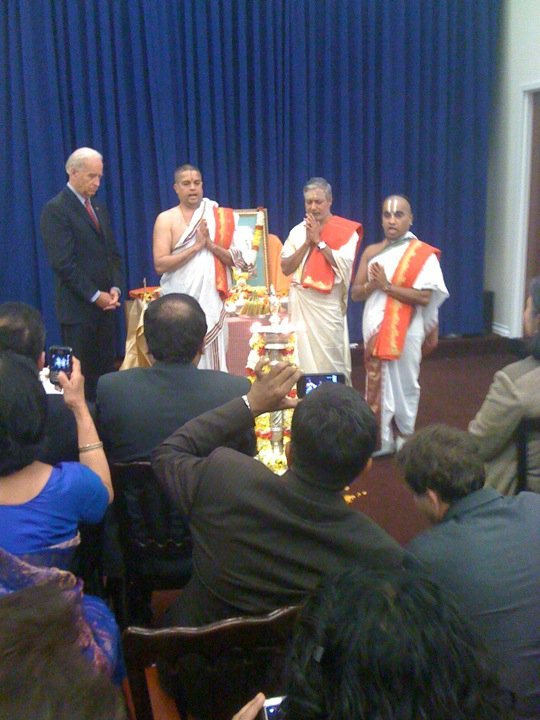
The second time visiting DC, at age 29, I’d been summoned by the White House to DJ their annual Diwali party. I took a train with my uncle, little brother, production collaborator, and my partner at the time. The ceremony opened with Vice President Joe Biden participating in a purification ceremony with a group of priests, surrounded by the Sikh, Hindu, and Jain community cultural contributors and political representatives. I was there to DJ the afterparty for a room full of important people who love classic Bollywood, one of my favorite specialties.

The third time, at 35, I’d arrived in the capital to move in resistance to the inauguration of Donald Trump to the highest office in America. 2016’s presidential election traumatized the nation as we watched every single marginalized community in this country get slandered, offended, threatened, and trod on by this ugly man’s ugly campaign. The whole ordeal left the majority of this country feeling sick to their core, and helpless, and in DC I was surrounded by them, none of us alone in our rage.

I was born in Kolkata, India. My family moved here in 1984. My dad left first when I was 2, then at age 3 my mother and I got on a plane from tropical heat and landed in 3 feet of snow at JFK international airport in Queens. I ran away 3 times on the flight, kicking and screaming about missing my grandmother, who had been raising me while my mom was working, and in grad school.
When we landed, the first thing that happened to her was that the woolen winter coat she had brought along got stolen from her in the airport. This woman from a foreign land, with a feral child, and a strange and violent new reality ahead of her, she must have been terrified of this country from the very beginning.
It made perfect sense for her to choose to work a government job in finance, to be on the stable side of power in America. She re-educated herself here to do that work, but in India she had been a high school english teacher, and as a result my handwriting looks like I went to a Catholic School in Kolkata.
Books were considered to be sacred and holy objects in the Hindu Brahmin house i was raised in. My father became an expert in shelf building in the course of my growing up - they had an ever expanding collection. He obsessively picked them up from garage sales, which were an American miracle to him.
He also re-educated himself on arrival. In India he had been an entrepreneur, having tried to run a coal factory, a chicken farm, and also training to be a pilot. He had gotten into many motorcycle accidents before my birth. The last and final was when he and my pregnant mother were riding through Kolkata and the bike tipped and fell. Everyone was ok, but his motorcycling days were over after that, and after moving to the states he would re-educate himself to be an electrical engineer.
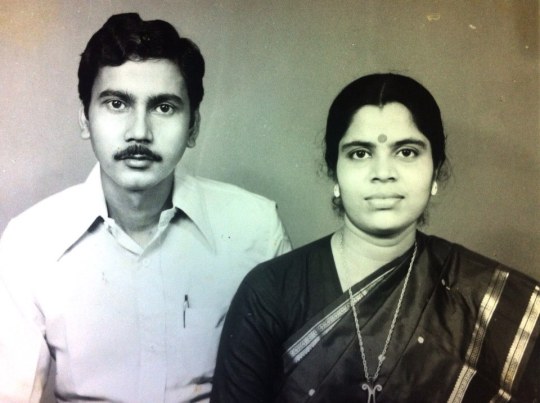
Their insistence on me having a great education, and our family having more potential is what motivated them to make great sacrifices to transition to America. So when I came out to them as a teenager it forced a direct confrontation between where we were all coming from and where we were all heading.
Being gay was not a valid identity in the culture they arrived from. When my mother really absorbed my identity, after walking in on my first kiss with a gay woman, Reagan era propaganda made her fear I would get AIDS and life a short and lonely life. We struggled for months to repair the rift, but I couldn’t compartmentalize my life enough to shield myself from her disappointment, and then I went off to college.
My 2nd year into college, after having grown up an only child, my Mom informed me that she was pregnant, at 47, and after not having spoken to me through my early college years. She wanted my opinion about whether she should keep the child. I asked her about the risks, there were many, and let her know I supported her decision either way. I also reminded her that when I was 5 I lied for a year to my friends about having a little brother, because I really wanted one as a kid. She decided to go forward with it. The distance between us temporarily shrank in the course of her pregnancy, and my brother was born a month after September 11th, 2001. George Bush was president. My whole family was terrified. That was the last year we saw a lot of each other.
When the Obama Administration took the stage, everything changed. After the political climate that followed 9-11, having a black president with a foreign sounding name was a welcome relief, even just on a symbolic level I know we all felt safer. When they asked me to DJ there, I invited my little brother to “perform” with me, and my Mom had to swallow her pride and agree to it. It was an extraordinary compromise, for extraordinary circumstances.

My little brother is a teenager now, he’s always been sensitive, articulate and thoughtful. His instagram feed showed me a photo he took of his friends protesting Trump during their school recess. He wrote a tender message to them there, expressing gratitude for their standing up and speaking out about things that matter to him, personally.
When the gay nightclub in Orlando had a mass shooting, he posted a photograph of his hand with all the hashtags #Pulse #Pride #Orlando scrawled across of the back of his hand in black ink.

When marriage equality happened, he changed his facebook profile to the rainbow overlay, in support of the movement.
Our immigrant family story is strange and beautiful and also painful sometimes. For real though. This country is built of immigrant stories and the resilience that it requires to sacrifice and rebuild in the face of constant change.
The changes that are coming are going to test all of us, but many of us are used to being tested this way as a matter of survival. Adaptation is the norm in American culture, and that is a fact. I plan to stand up for the freedoms that my family made sacrifices for, and it’s overwhelming and inspirational to see how many are also standing up at this moment in time and choosing resilience over fear.
vimeo
vimeo
1 note
·
View note
Text
Pyaar Kiya Toh Darna Kya: 27 Years Of LGBTQ Pride
New Post has been published on http://healingawerness.com/getting-healthy/getting-healthy-women/pyaar-kiya-toh-darna-kya-27-years-of-lgbtq-pride/
Pyaar Kiya Toh Darna Kya: 27 Years Of LGBTQ Pride
Saumya Gaur Hyderabd040-395603080 June 28, 2019
Love knows no bounds — this thought, while deeply philosophical and poignant, is also quite removed from reality. For the world which we inhabit, this abstract idea of love is chained and governed by cold, material reality. The reality of class, caste, religion, and yes, gender too.
But the heart wants what it wants, right?
The month of June is celebrated as the Pride Month in the memory of the Stonewall Riots that took place in New York, USA, in June 1969. These riots sprung from a spontaneous act of rebellion against the systemic harassment of the members of the gay, and lesbian community, by the police. Till then, the LGBT (Lesbian, Gay, Bisexual, Transgender) community remained divided into factions and lived in relative obscurity. But these riots helped them unite as a cohesive unit and thus, was born the active current of LGBTQ activism (where Q stands for queer). In many official and unofficial historical accounts of the LGBTQ movement, this moment is seen as the one where the gay and lesbian community gained a political identity (1).
thestonewallinn / Instagram
This alternative bit of history is still a part of mainstream considering it happened in a developed nation, but what about the 2nd most populous nation in the world, India? As we mark the end of the Pride Month, let us take a look at India’s own coming out of the closet.
India’s Rainbow: Existing In The Imaginative
rupinderkw_ / Instagram
Since the early days of the Indian society, ordinary Indian citizens who identified as homosexuals or those who acknowledged them to exist, tried their best to remain in the shadows, but every now and then, they would venture into the collective imagination through a mention in books, or poetry.
In 1942, the publication of Urdu writer Ismat Chughtai’s short story, Lihaaf, led to an obscenity trial wherein Chughtai was asked to apologize for her depiction of a relationship between two women as seen through the eyes of a young girl (2). Though she did end up winning the case, the story made her (in) famous as a provocative writer of corrupt books.
micandmanch / Instagram
From then, till the early 90s, depictions of homosexuality were attempted by a few brave writers, still the society at large remained uncomfortable talking about the issue, branding it immoral and corrupt (3).
The Opening Of The Closet
feminismismagic / Instagram
India’s own Stonewall moment came almost two decades after the original one. On August 11, 1992, a few protesters from an organization called AIDS Bhedbhav Virodhi Andolan, (ABVA), decided to block the entrance of Police Headquarters in Delhi to protest the arrest of several men on the suspicion of homosexuality (4).
The organization also laid the foundation for the repeal of the outmoded Section 377, which punished anyone who had voluntary carnal intercourse against the order of man with any man, woman, or animal.
Not only was this law used as a tool to oppress and terrorize members of the LGBTQ community, but its archaic phrasing also rendered certain sexual acts between consenting heteronormative couples as illegal! Needless to say, it had no place in modern India.
In 2001, the NGO Naz Foundation filed a Public Interest Litigation (PIL) in Delhi High Court to make homosexual intercourse legal. After a prolonged legal battle of 8 years, in 2009, Delhi High Court decriminalized homosexual acts, terming the section 377 as violative of the basic rights as given in the Constitution, but this decision was overruled by the Supreme Court in 2013 (5). Finally, after a number of walk-backs and debates on the constitutionality of the law, the Supreme Court finally legalized homosexual acts by partially striking down section 377, in September 2018 (6).
bhopalpride / Instagram
Though the credit for this landmark victory goes to these foundations, and a few eminent private citizens who mobilized support to fight the good fight, one can’t ignore those countless ordinary individuals who braved moral policing and contempt of the society by participating in freedom marches and pride parades. India’s first pride parade was held as early as 1999, in Kolkata, when 15 LGBTQ activists took part in Kolkata Friendship Walk (7). This tradition was adopted by other cities of the country which soon went on to host their own Pride parades.
Abolition Of Article 377: Towards A More Inclusive Future
officialhumansofbombay / Instagram
Though its neighbors like Taiwan have taken more radical steps such as legalizing same-sex marriage, India’s still testing the waters. But one thing is sure, the change is coming and for a lot of members of the LGBTQ community, there’s a rainbow at the end of the tunnel.
This can be evident from the fact that public personages like the athlete Duttee Chand, had no inhibition in announcing her sexual orientation to the world. And why would she, when she had such a strong community to support her (8).
More and more, acceptance is becoming the norm. It’s true that society fears what it does not understand, and now, the Indian society is collectively making an effort to understand its much-maligned faction. Stories of individuals who were accepted by their families, who are encouraged to be themselves unapologetically are increasing in numbers. Social media projects like Humans of Bombay are replete with them.
Popular media too has left behind its crude, mocking ways and is trying to portray the rich inner life of this section of the society without reducing them to cruel stereotypes.
It wouldn’t be right to say that everyone is free to love in this, post-377 India, but yes, they are no longer deemed criminals for loving someone who is of the same sex.
So, yes, with each passing day, India is surely but certainly making its way out of the closet.
The following two tabs change content below.
Latest posts by Saumya Gaur (see all)
Saumya Gaur
RELATED ARTICLES
Source: https://www.stylecraze.com/trending/twenty-seven-years-of-lgbtq-pride/
0 notes
Text
0 notes
Text
After the Supreme Court reverted the 2009 Delhi High Court ruling of decriminalising homosexuality and nullifying Section 377 in 2013, most major cities in the country erupted with fiery protests against the decision. But while the LGBT movements had already gathered quite a lot of momentum in cities like Mumbai, Delhi, Kolkata and Bangalore, for some of the secondary cities, it was still in its infancy stage.
The north-eastern states of India, or together called the Seven Sisters are some of the most discriminated ones in the country. Because of the differences in culture, customs, ethnicity and most importantly, appearance and language – the residents of the north-eastern states are often referred to as ‘not-really-Indians’. The students who go to other places from these states are called names and are made fun of. Add to that the constant insurgencies that have been more or less constant in the region since pre-independence era, you get a scenario where holistic progress is kind of stagnant.
Over the years, not much government initiative has been noticed to change this situation to any extent. Many would call this a step-motherly behaviour. Needless to say that when a place is made subject to discrimination by the citizens of the very same land where they belong to, for no apparent reason other than certain differences, that too in a country which is by default so much diverse – yet smaller a minority like the LGBT community is bound to face even graver situations.
source: https://goo.gl/k6kuwn
But in 2014, despite various threats and vandalism by right winged groups, Guwahati hosted the first LGBT Pride Walk in the entire North East India. There was participation not only from Guwahati, but also from other regions of North-east India — particularly, Manipur and Meghalaya.
https://goo.gl/jTcCbB
https://goo.gl/hh7vLU
The Pride March soon led to the creation of Xukia (meaning ‘unique’ in Assamese), Assam’s first ever LGBT support group in May 2014. Xukia made it easy for the youths of Assam and its sister states to come together and have open discussions about homosexuality and other LGBT issues, which was not so simple to do before.
source: https://goo.gl/Rz49Ky
Bitopi Dutta, one of the founding members and earliest LGBT activists in Assam, and currently a PhD scholar at the Dublin City University in Ireland said:
“We organised panel discussions, film screenings, informal gatherings, and, also, invited resource persons from other cities to conduct workshops on gender and sexuality related issues. This opened a plethora of avenues for young people in the city, who were struggling to come to terms with their sexuality.”
(source: firstpost.com)
Similar activities had been taken up in Manipur by All Manipur Nupi Manbi Association (AMaNA) since 2008 and Empowering Trans Abilities (ETA), founded in 2014 for lesbian, bisexual women and transgender men, which works closely with AMaNa.
In Meghalaya, a community based organisation (CBO) located in Shillong called Samakami has been offering health services and legal aid to members of the LGBT community since its opening in 2007.
The Guwahati Pride Parade celebrated its fourth year on February 5, 2017 where the theme of the day was ‘Freedom’. Throngs of people gathered in the streets of Guwahati to celebrate their individuality. There were songs, music, banners, balloons and of course, a good many amount of rainbows. Other than representatives of the LGBT community, the parade was supported by students of Guwahati University, National Law University, Tata Institute of Social Sciences, media persons and locals. Apart from slogans of freedom from Section 377, there were chants about revoking the AFSPA too.
source: https://goo.gl/y4kZNp
This pride walk, being the sole prominent one for the entire north-east, deserved much more national media attention just like the ones in the other cities. But even after several attempts by organisations like Xukia, local electronic media remains ignorant of the issue; or rather chooses to because it is “controversial”. As a result of no mass awareness, it gets difficult to gather people for the cause.
But despite such lack of institutional support, it is still going strong and reaching the people who need help and support, and bringing them out so that more people can be reached and helped. Solidarity is the only solution in a place like this where the real issues get shrouded in a cobweb of too much politics and ignorance.
source: https://goo.gl/MFGmV5
LGBT community in the north-east. #lgbtindia #lgbtnortheast #Guwahatiprideparade #JustCling After the Supreme Court reverted the 2009 Delhi High Court ruling of decriminalising homosexuality and nullifying Section 377 in 2013, most major cities in the country erupted with fiery protests against the decision.
#equality#guwahatiprideparade#india#lgbt#lgbtindia#lgbtnortheast#lgbtq#lgbtqindia#Section377#SupremeCourtRuling
0 notes
Text
0 notes
Photo

At Kolkata's Rainbow pride walk, CAA and NRC take the frontline https://t.co/0VPykzTfvC via @BiIndia
0 notes

